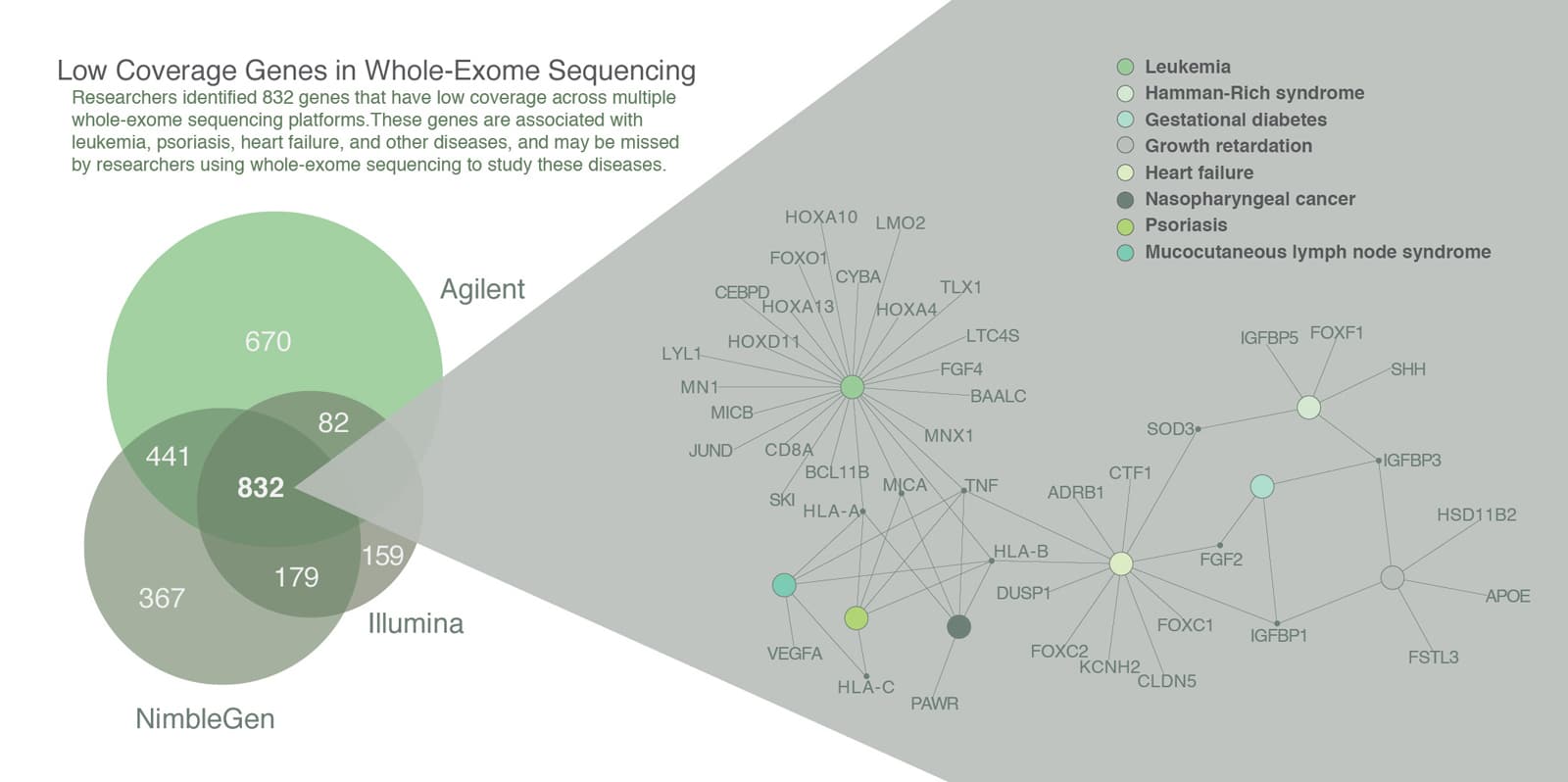A common DNA test used to find genes linked with disease may miss key genetic risk indicators, new research suggests.
Whole-exome sequencing—a technology that saves time and money by sequencing only protein-coding regions and not the entire genome—has been used in many studies to identify genes associated with disease, and by clinical labs to diagnose patients with genetic disorders.
However, the new research shows that these studies may routinely miss mutations in a subset of disease-causing genes that occur in regions of the genome that the cost-saving technology reads less often. A paper describing the research appears in the journal Scientific Reports.

“Although it was known that coverage—the average number of times a given piece of DNA is read during sequencing—could be uneven in whole-exome sequencing, our new methods are the first to really quantify this,” says coauthor Santhosh Girirajan, assistant professor of biochemistry and molecular biology and of anthropology at Penn State. “Adequate coverage—often as many as 70 or more reads for each piece of DNA—increases our confidence that the sequence is accurate, and without it, it is nearly impossible to make confident predictions about the relationship between a mutation in a gene and a disease.
“In our study, we found 832 genes that have systematically low coverage across three different sequencing platforms, meaning that these genes would be missed in disease studies,” Girirajan says.
DNA sequencing reveals six new forms of blindness
The researchers developed two different methods to identify low-coverage regions in whole-exome sequence data. The first method identifies regions with inconsistent coverage compared to other regions in the genome from multiple samples. The second method calculates the number of low-coverage regions among different samples in the same study. The team has packaged both methods into an open-source software for other researchers to use.
“Even when the average coverage in a whole-exome sequencing study was high, some regions appeared to have systematically low coverage,” says Qingyu Wang, a graduate student at the time of the research and the first author of the paper.
Low-coverage regions may result from limited precision in whole-exome sequencing technologies due to certain genomic features. Highly repetitive stretches of DNA—regions of the genome where the same simple sequence of As, Ts, Cs, and Gs can be repeated many times—can prevent the sequencer from reading the DNA properly. Indeed, the study showed that at least 60 percent of low-coverage genes occur near DNA repeats.
DNA ‘typos’ may cause 66% of cancer mutations
As an example, the gene MAST4 contains a repeated sequence element that leads to a 3-fold reduction in coverage compared to non-repeating sequence. Even when other genes have sufficient coverage, this region of the MAST4 gene falls well below the recommended coverage to detect genetic variations in these studies.
“One solution to this problem is for researchers to use whole-genome sequencing, which examines all base pairs of DNA instead of just the regions that contain genes,” says Girirajan. “Our study found that whole-genome data had significantly fewer low-coverage genes than whole-exome data, and its coverage is more uniformly distributed across all parts of the genome. However, the costs of whole-exome sequencing are still significantly lower than whole-genome sequencing.”
“Until the costs of whole-genome sequencing is no longer a barrier,” Girirajan says, “human genetics researchers should be aware of these limitations in whole-exome sequencing technologies.”
The March of Dimes Foundation, the US National Institutes of Health, the Brain and Behavior Research Foundation, the Huck Institutes of the Life Sciences, and the Penn State Experiment Station funded the work.
Source: Penn State



